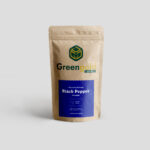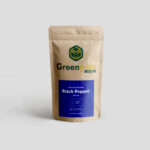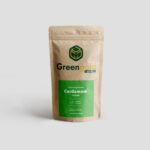Cardamom farming can be highly profitable, but it also comes with its share of challenges. Many farmers struggle to maintain healthy yields, and some even fail completely due to avoidable mistakes. If you’re looking to start or improve a cardamom farm, understanding these common pitfalls can help you stay ahead. 🌿✨
1. Poor Soil Management 🌱🚫
Mistake:
Many farmers plant cardamom without testing or preparing the soil properly. Cardamom requires fertile, well-drained soil with high organic matter. If the soil is too acidic, compacted, or lacks nutrients, the plants will struggle to grow.
Solution:
✅ Test the soil before planting.
✅ Maintain a pH level between 5.5 and 6.5 for optimal growth.
✅ Use organic compost, manure, and mulching to improve soil fertility.
2. Lack of Proper Shade 🌳☀️
Mistake:
Cardamom plants thrive in shade (40–50% sunlight exposure). Many farmers either plant in open fields (too much sun) or dense forests (too much shade), both of which lead to poor growth.
Solution:
✅ Use shade trees like silver oak or gliricidia to provide the right balance of sunlight and shade.
✅ Maintain proper spacing to avoid overcrowding.
3. Overuse or Misuse of Pesticides and Fertilizers ☠️❗
Mistake:
Some farmers overuse chemical fertilizers and pesticides, thinking it will boost growth. Instead, it leads to soil degradation, pest resistance, and lower-quality cardamom.
Solution:
✅ Use organic fertilizers like compost, cow dung, and bio-fertilizers.
✅ Adopt Integrated Pest Management (IPM) instead of excessive pesticide use.
4. Poor Irrigation Practices 💧🚱
Mistake:
🚰 Too much water leads to root rot, while too little water results in stunted growth. Many farms fail due to improper irrigation techniques.
Solution:
✅ Use drip irrigation to control moisture levels effectively.
✅ Ensure good drainage to prevent waterlogging.
5. Neglecting Disease and Pest Control 🐛🍂
Mistake:
Common cardamom diseases like rhizome rot, capsule rot, and mosaic virus can destroy entire farms if not managed. Ignoring early warning signs leads to low yields or complete failure.
Solution:
✅ Regularly inspect plants for pests and diseases.
✅ Use organic pest control like neem oil, biological agents, and crop rotation.
6. Poor Post-Harvest Handling 📉❌
Mistake:
Many farmers harvest too early or dry cardamom improperly, leading to low-quality, less aromatic cardamom that sells for a lower price.
Solution:
✅ Harvest cardamom when the pods are fully mature and green.
✅ Use proper drying techniques (indirect sun drying or drying machines) to maintain quality.
7. Market Misinformation and Lack of Pricing Knowledge 📉💰
Mistake:
Some farmers sell their produce at low prices due to lack of market research or dependence on middlemen.
Solution:
✅ Stay updated on daily cardamom market prices. 🌐 Check daily prices here
✅ Consider direct selling to buyers or through online platforms for better profits.
8. Not Adopting Sustainable Farming Practices 🌿♻️
Mistake:
Using unsustainable farming methods like deforestation, chemical dependency, and excessive tilling harms the environment and leads to long-term farm failure.
Solution:
✅ Implement organic farming methods.
✅ Use mulching and agroforestry to retain soil fertility.
Final Thoughts 💡
By avoiding these common mistakes, you can improve your cardamom farm’s productivity and profitability. Smart planning, organic farming methods, and proper irrigation can make all the difference. 🌟












